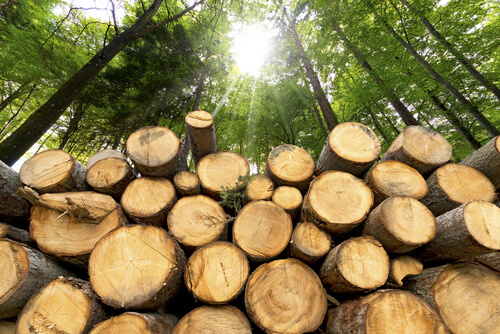Biomass As Renewable Energy Is The Mistake India Needs To Avoid At All Costs
 Difference of definition over Biomass
Difference of definition over Biomass
A contentious issue that is fast developing into a major cause for disagreement in the developed world, is the categorisation of wood as a biomass, fit for use as a renewable energy fuel. The issue here is not just the fact that this creates an opening to continue forest logging in vast tracts across North America, and beyond, but also the very truthfulness, or correctness of this categorisation. Common sense would have seemed to dictate that, but not in European law, it seems.
In Europe, when power plants burn wood to produce electricity, the carbon dioxide pollution they create is counted only for the burning of fossil fuels needed to manufacture and transport the wood used as fuel. Not the wood itself. Based on the assumption that wood burning can be discounted, as it is compensated by the trees grown to replace them. That seems wrong for two reasons. One, that replacement trees hardly grow immediately,leaving a huge gap in the period between absorbing the carbon emissions generated by burning their predecessors. Secondly, forest wood that has been cut leads to loss of loss of the forest’s ability to absorb carbon dioxide in the meantime. The meanest cut? The actual carbon dioxide emissions from wood burning are higher than those from coal, it seems.
Thus, wood fired electricity has quietly become the largest source of “renewable energy” in the EU today, accounting for over 50 percent of total RE there. While that helps member states meet the requirements of EU climate laws on paper, it certainly doesn’t do the job in spirit.
In India, we need to protect against the same mistake, especially as we seem to have got it right so far. But now, with pressure on older coal plants to shut down, one never knows, what lobbying to follow ‘european standards’ may achieve. Over 500 biomass power and cogeneration projects with aggregate capacity of 9075.5 MW have been installed in the country up to March 2019. 138.30 MW capacity grid interactive projects and 111.43 MW capacity off-grid power projects using biomass waste, 78 biogas generation plants with 6,65,606 cubic meters per day generation capacity and 16 Bio-CNG generation plants with 59028 kgs per day generation capacity have been set up in the country so far.
In India, thanks to the large agricultural economy, the focus on biomass has been on agricultural waste and residues. And though Forest wastes (see figure below) does mention logs, chips and sawdust, it is critical to ensure that it does not become a reason to take down forests that are already under pressure here. With a very poor record of afforestation to replace them.

Even acclaimed documentary maker Michael Moore’s ‘Planet of The Humans‘, a documentary he released in April this year, that took potshots at the RE industry, probably had its only moment of truth when it spoke about the biomass industry in the US. The fact that most of the other information it shared on solar and wind was so outdated that the whole message, including on Biomass, got lost .
As pressure mounts on the EU to relook the rule that allowed the biomass based on wood burning to take such deep roots there, you can be sure that powerful lobbies will work against it too. One only hopes that India doesn’t fall victim to the intense efforts they will make to make wood fired electricity acceptable.
Countries like Finland, and Sweden especially, which has funded many renewable energy efforts worldwide, have a strong vested interest in promoting wood, as they have massive forest reserves, and very little population pressure for the land they occupy. One hopes they will be able to see the truth behind the numbers, and consider diverting reserves, if at all, to wooden buildings perhaps, to replace concrete, a trend that is also catching up. Wooden buildings, with their longer life spans are far more capable of delivering a real carbon neutral solution, than wood burning.





Burning waste boils down to stripping topsoil. It makes a lot more sense to capture methane from waste rather than burning the waste itself.